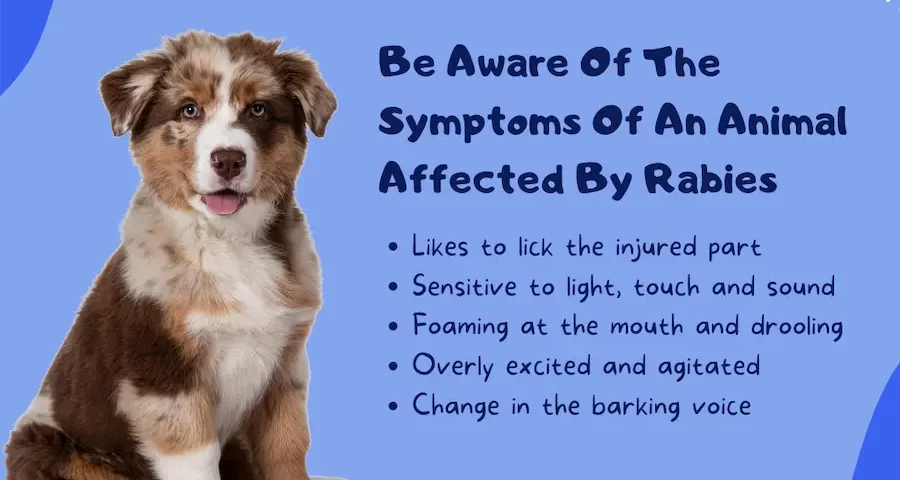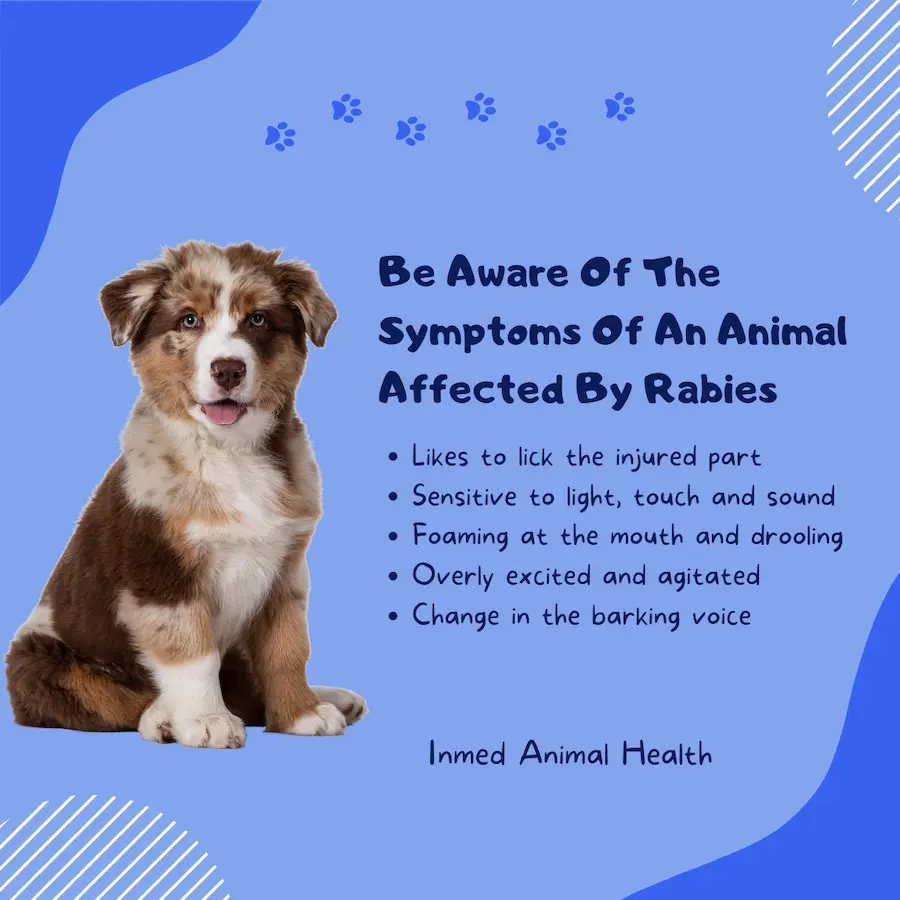




Yes, although it is not very common, a dog scratch cause rabies. It is possible for rabies to be transmitted through a dog scratch without any bleeding. India is among the rabies endemic countries.
Rabies is a highly infectious and potentially deadly viral disease that can affect both humans and animals. It can be transmitted through the saliva of an infected animal, typically via a bite. In animals, there are two forms of rabies: paralytic rabies and furious rabies.
Paralytic rabies causes animals to become depressed and hide away, eventually leading to paralysis. Symptoms of paralytic rabies include an inability to raise the head, weakness, choking, and an absence of fear towards humans.
Furious rabies, on the other hand, causes animals to become overly excited and agitated, often leading to seizures. Their barking voice changes.
In humans, rabies typically starts out with flu-like symptoms, such as headaches and fevers, and can progress to painful throat spasms, hydrophobia (fear of water) and paralysis.
A definite diagnosis of rabies requires laboratory analysis of samples from the patient. Fortunately, rabies is preventable through vaccination.
When a rabid animal scratches a person, their saliva can enter the wound and cause the virus to be transmitted to the victim. This is especially true if the scratch is deep or puncture-like. Symptoms of rabies include pus from the wound, fever, headache and confusion, and can be fatal if left untreated.
Your dog’s nails may accidentally scratch you or cause you to get scratched in playtime. You might also get bitten by your dog during feedings or when playing fetch. These scratches can result from either your dog’s nails or teeth. When you get bitten by a dog, you might end up with red marks on your skin. They may become painful and swollen and, in more serious circumstances, result in more serious health risks.
To reduce the risk of rabies from a dog scratch, wash the wound with soap and water for three minutes and immediately seek medical attention if signs of infection appear.
Apply an over-the-counter (OTC) antibiotic cream or ointment.
Cover the wound with a sterile bandage.
It is important to remember that most dogs are vaccinated against rabies, so the chances of getting rabies from a dog scratch are small. However, if you are scratched by a dog and there is a possibility that rabies has been spread, you should seek medical attention immediately.

Rabies is a viral disease that is spread through contact with the saliva of an infected animal. It is fatal once clinical symptoms begin to appear. To prevent the onset of rabies, it is important to immediately wash any wound caused by a suspected rabid animal with soap and water for at least 15 minutes.
Post-exposure prophylaxis (PEP) is the immediate treatment of a bite victim after rabies exposure, which consists of extensive wound washing and a course of potent and effective rabies vaccine, as well as the administration of rabies immunoglobulin (RIG) if indicated.
Pre-exposure immunization is recommended for those in high-risk occupations or for those travelling or living in remote areas with a high rabies exposure risk. Diagnosis may be difficult, and can be confirmed by various diagnostic techniques.
Globally, human rabies deaths are prevented by increasing awareness of rabies prevention, responsible pet ownership, and immediate care after a bite. WHO works with partners to guide and support countries in developing and implementing their national rabies elimination plans.
Inmed animal Amino-Vit helps specially for dogs to build immunity at starting age to fight against the harmful viruses
Yes, if the scratch is contaminated with saliva from a rabid dog.
No, it can spread through scratches and licks on broken skin too.
Wash immediately with soap and water, then see a doctor.
Yes, if the dog is unvaccinated or its status is unknown.
Very unlikely, if the dog is properly vaccinated.
Ideally within 24 hours of the incident.
Yes, if the skin is broken and the dog is rabid.
Fever, headache, fear of water, paralysis, and death.
Yes, if the skin is broken, even without visible bleeding.
Usually 1–3 months, but it can vary.
No, rabies can’t be tested in humans before symptoms.
No, only fresh untreated scratches are risky.
Yes, depending on your vaccination history.
Rabies is almost always fatal once symptoms appear.
No, only rabies vaccine and immunoglobulin can prevent it.
Also Read